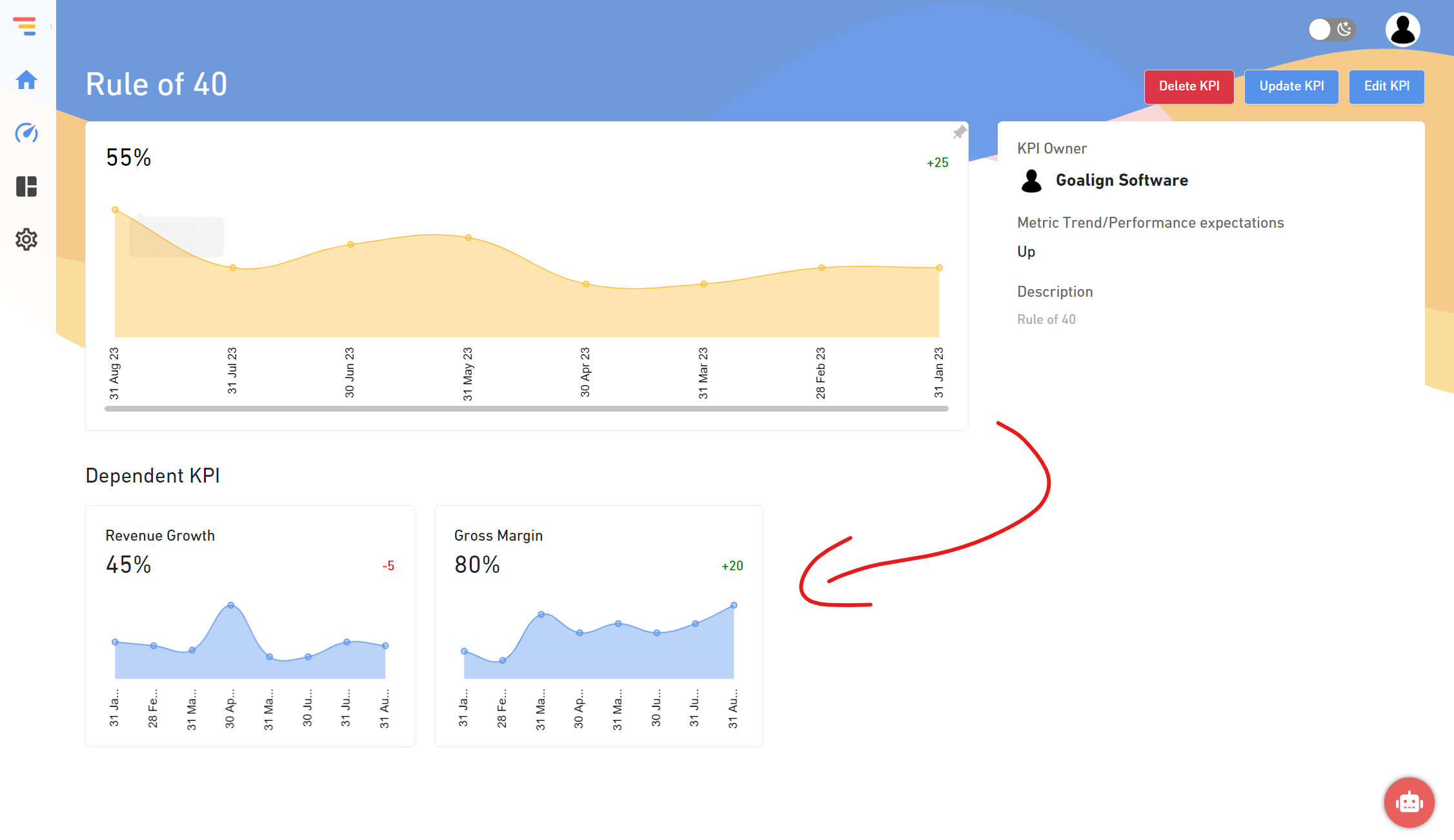What Exactly Is An OKR In Marketing?
Using Marketing OKRs OKRs are a goal-setting framework that can help your organization create, track, and achieve all of its marketing objectives:
What exactly is OKR stand for?
Let’s divide it down into its constituent parts:
- (Objectives): a specific company objective that you would like the marketing team to achieve
- KR (Key result): ‘targets’ or metrics that your team must hit to meet these objectives
In a word, Objectives are ‘what’ we want to do, and Key Results are ‘how’ we can accomplish it. It takes skill to navigate the OKR architecture. Do you want to know more? We’ve committed a whole post to educating you about OKRs.
How does one go about creating a marketing OKR?
Prepare your brushes (or, in this instance, pens) because we’ll teach you the not-so-secret recipe for generating an excellent OKR:
Whether your quantifiable objective is for the long term, the quarter, or even the next month, this method will assist you in achieving it.
Why Establish OKRs for your Marketing Team
OKRs, or Objectives and Key Results, are a goal-setting technique used by marketing teams and other departments to establish challenging, ambitious goals with measurable outcomes. OKRs are used to measure progress, promote alignment, and inspire participation in pursuing quantifiable objectives.
OKRs can be a superpower in terms of fostering an atmosphere in which workers can work with purpose. Intel, LinkedIn, and Airbnb have had incredible outcomes with OKRs. Still, it is less frequently mentioned that implementing a goal framework properly may generate a substantially improved working environment.
The OKR technique is relatively easy. When utilized correctly, OKRs may assist your marketing team in creating things like high output management, team alignment, and enhanced communication in all of your company goals.
OKR Development and Implementation for Your Marketing Team
OKRs are designed to meet the demands of any organization, department, or industry, and they function the same way for creating objectives at all levels of the business. Individuals or small groups can also utilize them to accomplish outcomes.
Objectives must be clear, actionable, and (hopefully) inspirational, as well as executable and time-bound.
Key results determine the success or failure of an Objective. They are quantitative, measurable, and time-bound, making it simple for the team to monitor progress. Contributors to the KRs should track progress regularly. After the OKR term (usually a quarter), there should be a regular grading of the KR and a retrospective.
How would you create a marketing OKR?
OKRs are effective, and they are easy to implement. You should be aware that there are many sorts of marketing OKRs you may strive for. Before we get into the many types of marketing OKRs, here are a few pointers to assist you correctly mapping out your OKRs:
Maintain ambitious, honest, and compelling goals. When determining your goals, avoid getting bogged down in the details. Make your ambitions broad and bold, and make sure all critical stakeholders know the agreed-upon targets. A decent rule of thumb is to limit yourself to three to five goals. There are enough to be ambitious, but not so many that it becomes overwhelming.
Make sure that your actual results are quantifiable. That’s how you’ll know whether you’re making progress toward your goal. Your essential outcomes must be visible in some way. These are concrete measures that can help you get closer to your destination. Determine three to four critical effects for each target.
Establish and adhere to a quarterly OKR planning timeline. OKRs operate best when scheduled quarterly, establishing and keeping to a cycle. Quarterly planning allows for a review and adjustment of OKRs as needed.
Those pointers are applicable regardless of the sort of marketing OKR you’re establishing.
How do you get an agreement with clients on marketing OKRs?
OKRs are essential not just for your internal marketing team, but they may also help you create criteria and measures for success with your clients if you work in an agency.
Campaign managers are all too familiar with the scenario: your client wants to run a campaign and expects dramatic results, such as a 200 percent boost in site traffic from a handful of optimized blog articles.
To prevent unreasonable expectations and keep your agency team sane, define OKRs with your customers that assist them in reaching their corporate goals while not over-promising achievements that will overwhelm your team.
Examples of OKRs for Marketing Teams
Strong, well-structured, and profitable OKRs are tough to develop. Even though Objectives and Key Results is a straightforward and robust technique, many teams struggle to determine the appropriate Objectives and relevant metrics for the Key Results.
Examples of OKRs in Strategic Marketing
Objective 1: Ensure that the organization reaches its sales objectives.
Key Results:
- Increase monthly new incoming sales from $25k to $50k.
- Bring in 500 new sales qualified leads.
- Bring in 100 new qualified leads from the new market (Europe).
Examples of OKRs for Product Marketing
Objective 1: Clarify our product message in preparation for the new product launch.
Key Results:
- Conduct ten on-site user-testing sessions to understand TA further.
- Investigate and install 20 new distribution channels for our content.
- Run 20 different Facebook advertisements and track their performance.
- Prepare the new product presentation and test it with five consumers.
Examples of Objectives and Key Results for Inbound Marketing
Objective 1: Increase the number of incoming leads to the website.
Key Results:
- Increase the number of website views from 12k to 20k.
- On Ahrefs, raise the DR score from 35 to 45.
- Reduce the homepage bounce rate from 62 percent to 40%.
Examples of OKRs for Content Marketing
Objective 1: Use the weekly newsletter to attract new visitors.
Key Results:
- Create the content plan and subjects for the following four months.
- Increase the subscription base from 2,000 to 10,000.
- Increase the newsletter’s open rate from 25% to 35%.
OKR Examples for Social Media Marketing (SMM)
Objective 1: Increase the number of people who follow you on social media.
Key Results:
- Increase the number of Facebook/Instagram/YouTube subscribers from 14k to 25k.
- Increase the monthly amount of views on Quora from 3k to 5k.
- Increase the number of monthly leads generated by social media from 750 to 1500.
OKR Examples for SEO
Objective 1: Improve the website’s SEO ranking.
Key Results:
- One hundred new referral links should be added.
- On Ahrefs, raise the DR score from 42 to 60.
- Increase the number of visitors referred from 7,300 to 10,000.
OKR Examples for Public Relations/Brand Marketing
Objective 1: Establish a top industry brand.
Key Results:
- Establish a top industry brand. Key Results:
- Hire a branding agency by September 1.
- Launch five new advertising campaigns.
- With the new ad campaigns, you may reach 1 million people.
- Obtain 20 media placements and speak/participate in 10 conferences.
Examples of OKRs for PPC Marketing
Objective 1: Increase the efficacy of paid acquisition.
Key Results:
- The lead cost was reduced from $7 to $5 due to these efforts.
- Test ten new PPC campaigns and assess their effectiveness.
- Increase the conversion rate of PPC advertisements from 3% to 6%.
Conclusion:
Setting objectives is vital, but just expressing an aim is like drawing a marathon finish line and then instructing your team to run as quickly as they can. This is certain to result in frustration, burnout, and maybe an incomplete race. Instead, employing OKRs clarifies what your team is attempting to accomplish but also assists them in understanding how they are going toward that goal.






